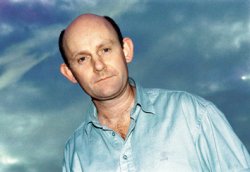Astronomer’s role in new planets discovery
A St Andrews researcher is part of the leading team of planet-hunting astronomers that have announced the discovery of three new planets today (31 October 2007).

Professor Andrew Collier Cameron, of the University’s School of Physics & Astronomy, played an important role in the recent discovery of three planets said to be as big as Jupiter, and named WASP-3, WASP-4 and WASP-5.
Professor Cameron is a member of the Wide Area Search for Planets (WASP) team, which also includes astronomers from the University of Keele and Queen’s University Belfast. Using `super-cameras’ in South Africa and the Canary Islands that monitor millions of stars over the entire sky, the latest finding makes them the only team to have found transiting planets in both the Northern and Southern hemispheres. The team are already responsible for the discovery of two new planets named WASP-1 and WASP-2 last year.
Professor Cameron, who measured the sizes of the new extra-solar planets, said, “All three planets are similar to Jupiter, but are orbiting their stars so closely that their ‘year’ lasts less than two days. These are among the shortest orbital periods yet discovered. Being so close to their stars the surface temperatures of the planets will be more than 2000 degrees Celsius, so it is unlikely that life as we know it could survive there. But the finding of Jupiter-mass planets around other stars supports the idea that there are also many Earth-sized planets waiting to be discovered as astronomers’ technology improves.” 
Over 200 extra-solar planets (those that orbit other stars, rather than our Sun) are currently known to astronomers. The three new planets were found as the WASP cameras detected small dips in the brightness of the host stars, caused when planets pass in front of, or transit, them. Studying such planets outside of our solar system allows scientists to investigate how planetary systems form.
Dr Coel Hellier of Keele University said, “When we see a transit we can deduce the size and mass of the planet and also what it is made of, so we can use these planets to study how solar systems form.”
WASP-4 and WASP-5 are the first planets discovered by the WASP project’s cameras in South Africa, and were confirmed by a collaboration with Swiss and French astronomers.
“These two are now the brightest transiting planets in the Southern hemisphere,” said Dr Hellier. WASP-3 meanwhile is the third planet that the team has found in the North, using the SuperWASP camera sited in the Canary Islands.
Dr Don Pollacco, of Queen’s University Belfast, said, “We are the only team to have found transiting planets in both the Northern and Southern hemispheres; for the first time we have both SuperWASP cameras running, giving complete coverage of the whole sky.”
The WASP project is the most ambitious project in the world designed to discover large planets. Funding for the project comes from the three universities and the Science and Technology Facility Council.
Weblink: www.superwasp.org/wasp_planets.htm
ENDS
NOTE TO PICTURE EDITORS:
AN ARTIST’S IMPRESSION IS AVAILABLE FROM THE SCIENCE AND TECHNOLOGY FACILITIES COUNCIL PRESS OFFICE – CONTACTS BELOW.
NOTE TO EDITORS:
The discovery of WASP-3, WASP-4 and WASP-5 is being announced by the WASP project this week at an international conference on extrasolar planets in Suzhou (near Shanghai), China.
Contacts
Professor Andrew Collier Cameron, University of St Andrews.
Tel: 01334 463147
Email: [email protected]
Dr Don Pollacco, QUB, WASP Project Scientist
Tel: 02890 973512
Email: [email protected]
Dr Coel Hellier, Keele University
Tel: 01782 584243
Email: [email protected]
Gill Ormrod – Science and technology Facilities Council Press Office
Tel: 01793 442012. Mobile: 0781 8013509
Email: [email protected]
Issued by the Press Office, University of St Andrews
Contact Gayle Cook, Press Officer on 01334 467227 / 462529, mobile 07900 050 103, or email [email protected]
Ref: Trio of new planets 311007
View the latest University press releases at www.st-andrews.ac.uk
Category Research